Data Viewer
Portrait
Genes
Exploration
Dataset
Respiratory Cell Atlas is a comprehensive and unified atlas of the respiratory system that is built across research, organ, disease and sequencing platforms. We integrate the majority of single-cell transcriptome datasets published in all regions of the respiratory system from human respiratory samples from diverse sources to provide a uniform framework of cell types and artificially curated metadata annotation for healthy, disease, and developing respiratory cell studies.
The Data Viewer may take dozens of seconds to load due to the substantial volume of data present in the Respiratory Cell Atlas.
The function of the Data Viewer page is to display a UMAP of sample characteristics and gene expression in the Respiratory Cell Atlas. In the “EXPLORE” tab, you can view a specific UMAP by selecting any meta information of interest in the “Cell Metadata” tab. In addition, you can view the expression of specific Genes through the “Genes/Features” tab. The “Sets” tab allows you to view differential genes for specific cell types. On the right is the module that displays the specific category of UMAP in the selected meta information.

| Name | Description |
|---|---|
| sample_ID | Sample ID of the cells or nuclei. |
| donor_ID | Author specified donor IDs, which are indicated in the original publications. |
| donor_gender | F = Female; M = Male; Unclassified = Unknown. |
| donor_age | For postnatal individuals, 6 months old is denoted by 6mo; 21 years old is denoted by "21yr". For prenatal individuals, 9w stands for 9 gestational weeks (GW). For organoids, use d (days in culture) Eg. 10d. |
| donor_status | Each donor's disease status corresponds to common names appearing in MONDO Diseased Ontology. |
| organ | Anatomical structure level 1 (Please find details in the first table of the Help Page). |
| sample_status | Each disease status corresponds to common names appearing in MONDO Diseased Ontology. |
(3) You may download the UMAP, using selection tools to crop an area and zoom-in/out by clicking on the tool bars on the top-right of the panel (Some tools may take several seconds to load).
Portrait
The interactive viewer shows the adult human respiratory system and includes all the major regions from the data used in Respiratory Cell Atlas.
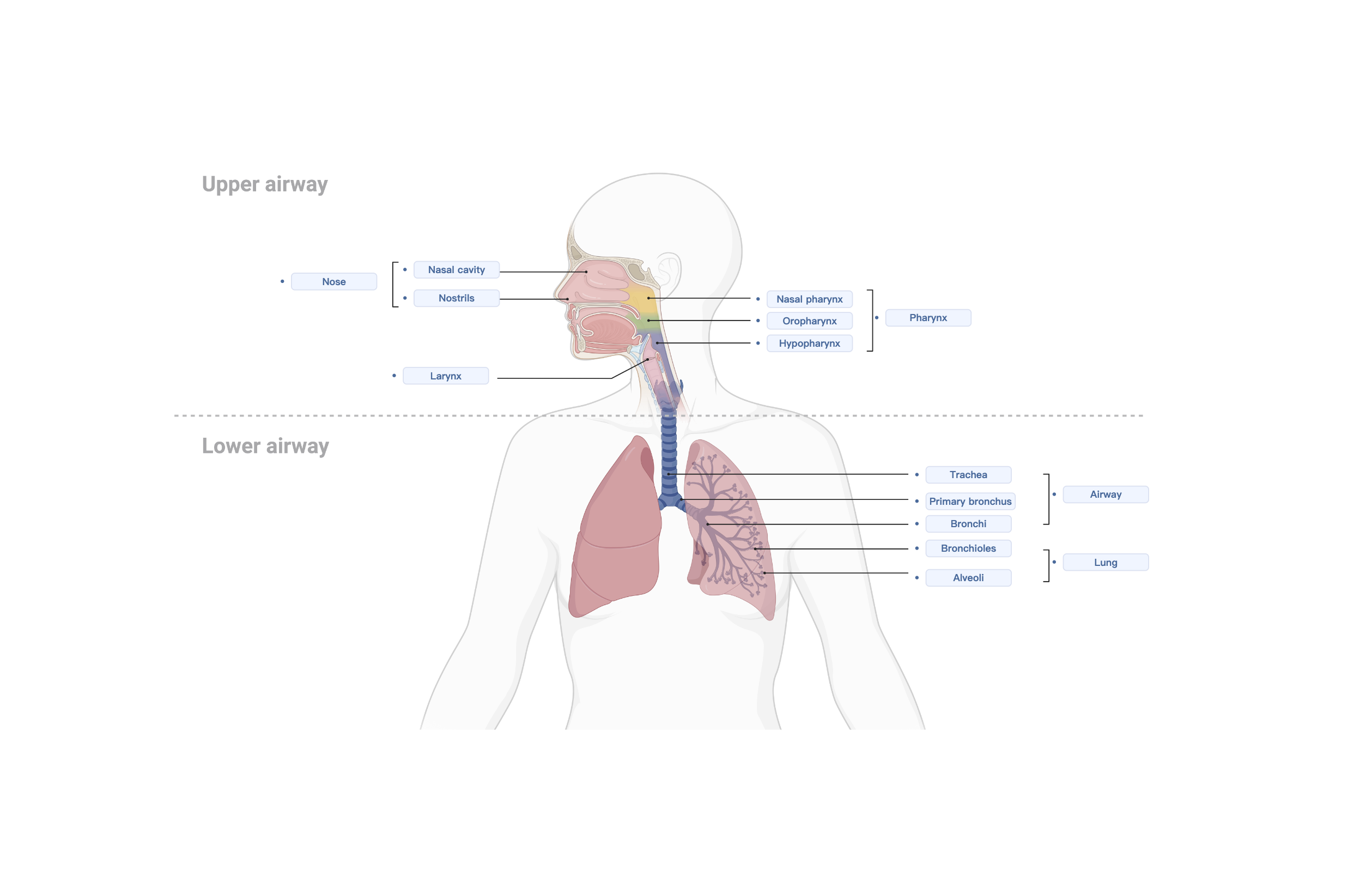
| Level1 | Level2 | |
|---|---|---|
| Pharynx | Nasal pharynx | |
| Pharynx | Oropharynx | |
| Pharynx | Hypopharynx | |
| Airway | Trachea Primary bronchus Bronchi |
|
| Lung | Bronchioles Alveoli |
|
| Nose | Nasal cavity Nostrils |
|
| Larynx |
Gene
Users can obtain a list of differentially expressed genes of the cell types from a selected brain region and the list is available for download in csv or pdf formats.
The cell type name is defined by the most scored prediced cell type computed from the 8 machine-learning-based annotation methods:
For example, choosing an atlas to start with (Adult is shown here), and compute for candidate markers within a specific region by selecting the tab By Region or find candidate markers of a cell type by selecting the tab By CellType. After selection and click on the tab Markers, a volcano plot will be shown and list of candidate markers are listed in the table available for downlod in pdf or csv format.
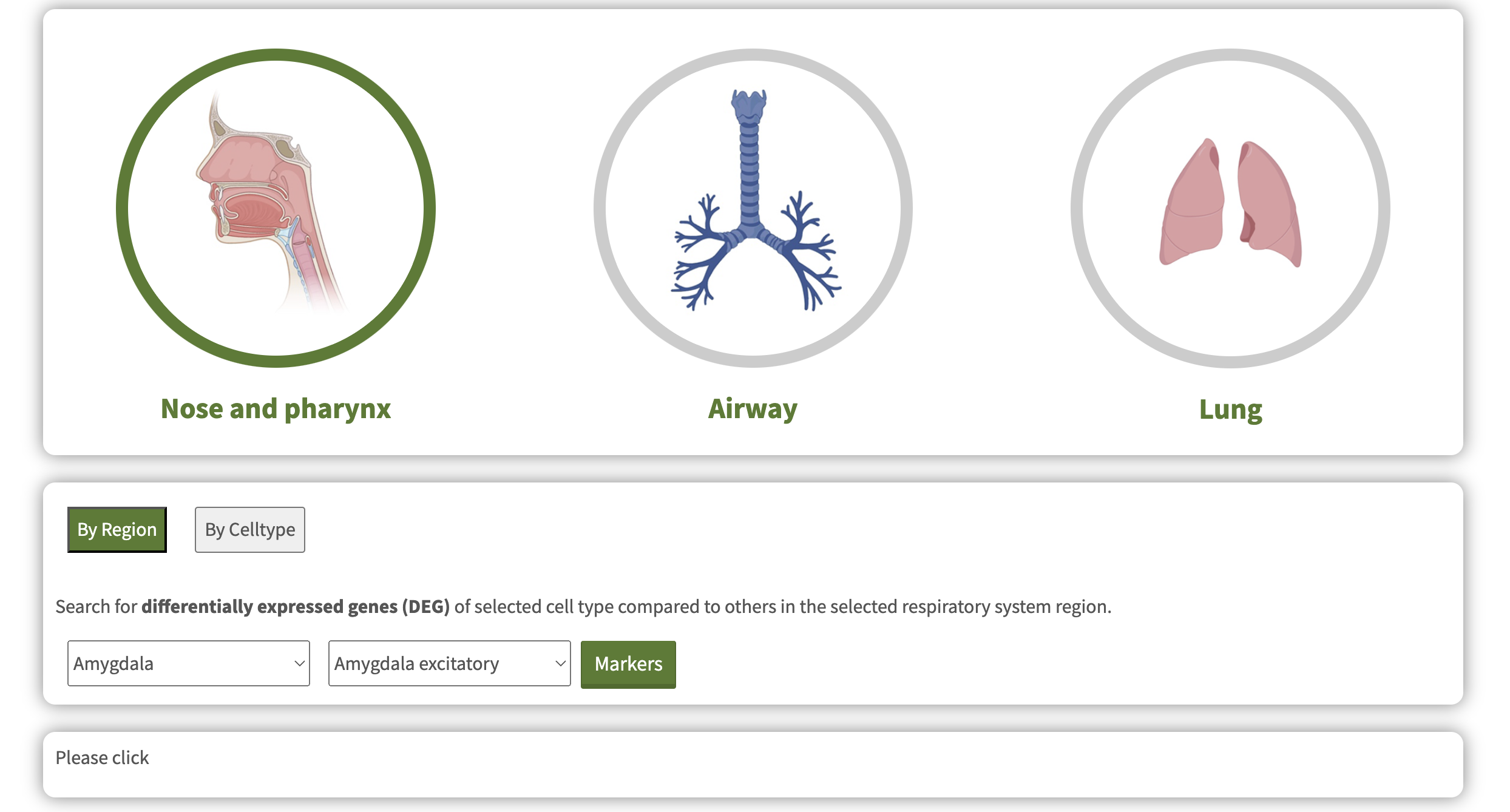
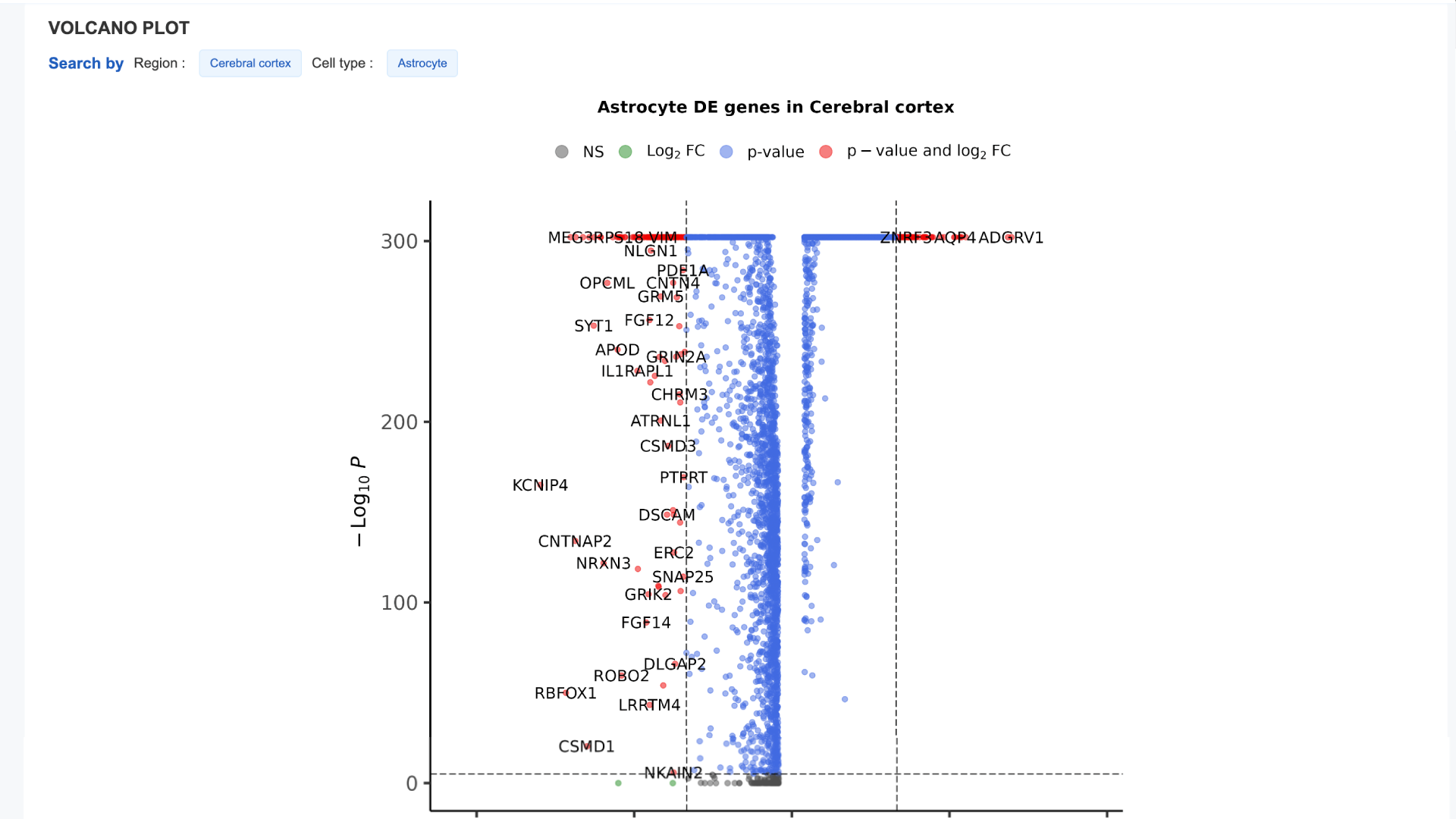
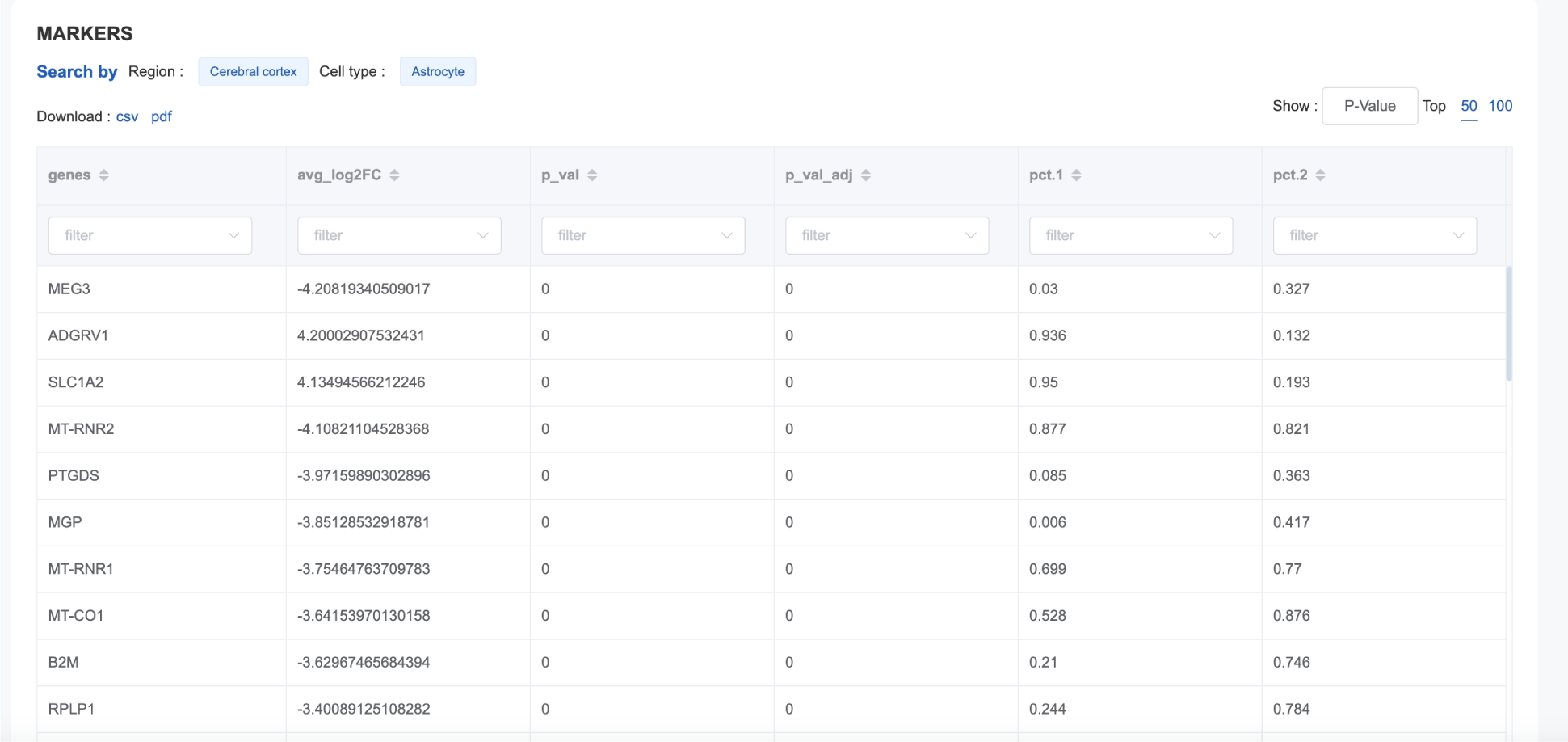
Region DEG (Differential expression Genes) compares different cell types from the same region. A violin plot of the top 3 DEGs for each different cell types of the region will be shown after selection of the input.

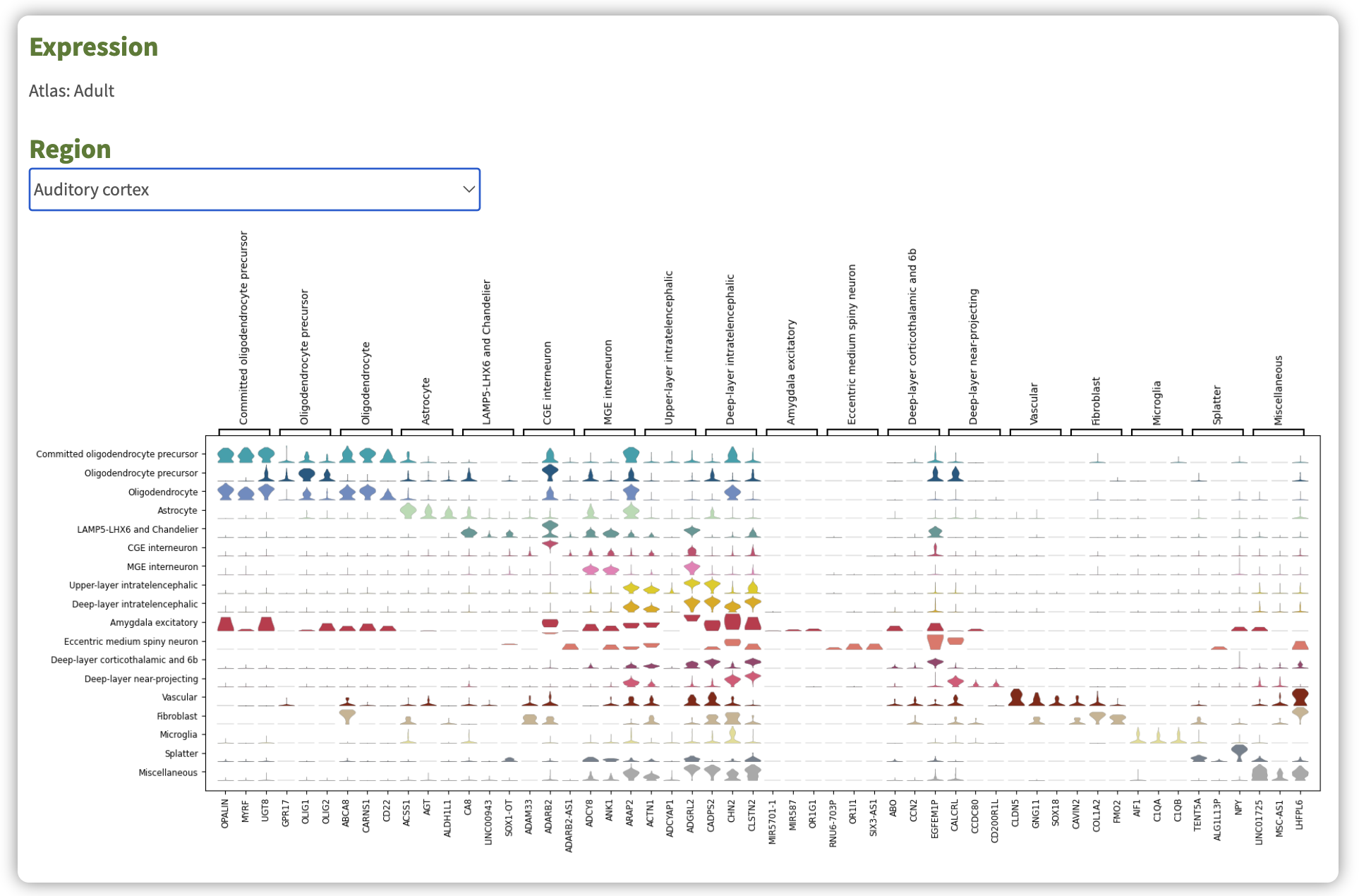
CellType DEG compares the same cell type from different regions. Likewise, a violin plot of the top 3 DEGs for this cell type across different region will be shown after selection of the input.
The Dataset page includes all the datasets used in the Brain Cell Atlas, a full list of the studies and authors from this page can be found here. Processed data with re-annotated cell type metadata will be avaiable for download upon publication.
